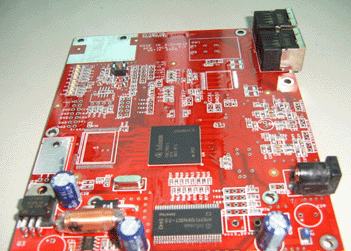In PCBA patch processing, the solder paste, patch glue, and component loss should be managed by quotas as one of the key process control contents. PCBA processing and production directly affect the quality of products, so it is necessary to control factors such as process parameters, processes, personnel, equipment, materials, processing and testing, and workshop environment.
There should be a clear post responsibility system for key positions. PCB operators should be strictly trained and assessed, and work with certificates. PCB manufacturers should have a set of formal production management methods, such as the implementation of first article inspection, self-inspection, mutual inspection and inspector inspection system. Those who fail to pass the inspection of the previous process cannot be transferred to the next process.
1. Product batch management. The nonconforming product control procedures shall clearly stipulate the isolation, identification, recording, review and handling of nonconforming products. Generally, SMA should not be repaired more than three times, and components should not be repaired more than twice.

2. Maintenance and maintenance of PCB manufacturing production equipment. The key equipment should be inspected regularly by full-time maintenance personnel, so that the equipment is always in good condition, the equipment status is tracked and monitored, problems are found in time, corrective and preventive measures are taken, and maintenance and repair are carried out in a timely manner.
3. Production environment
1. Water and electricity supply.
2. The environmental requirements of PCBA production line-temperature, humidity, noise, cleanliness.
3. PCBA site (including component library) anti-static system.
4. The access system, equipment operating procedures, and process discipline of the PCBA processing production line.
4. The production site should be reasonably set up and the identification should be correct; the warehouse materials and work-in-progress should be classified and stored, neatly stacked, and the ledger should be consistent.
5. Civilized production. Including: clean, no debris; civilized operation, no savage and disorderly operation behavior. On-site management must have systems, inspections, assessments, and records, and conduct daily "6S" (organization, rectification, cleaning, cleaning, quality, and service) activities.
What are the standard conditions for PCBA board inspection
1. PCBA board inspection standard:
1. Serious shortcomings (represented by CR): Any shortcoming that is sufficient to cause harm to the human body or the machine or endanger life and safety, such as: safety inconsistency/burning machine/electric shock, etc.
2. The main shortcomings (indicated by MA): The shortcomings that may cause damage to the product, abnormal functions, or affect the service life of the product due to materials.
3. Minor shortcomings (indicated by MI): does not affect product function and service life, some defects in appearance and minor defects or differences in mechanical assembly.
Inspection conditions of PCBA board:
1. In order to prevent the contamination of parts or components, you must choose gloves or finger cots with EOS/ESD full protection function and wear electrostatic rings to work. The light source is a white fluorescent lamp, and the light intensity must be above 100 Lux, which is clearly visible within 10 seconds.
2. Inspection method: place the product to be inspected about 40cm away from the eyes, 45o up, down, left, and right, and inspect it visually or with a three-fold magnifying glass.
3. Inspection criteria: (Sampling according to QS9000 C=0 AQL=0.4% sampling level; if the customer has special requirements, it will be determined according to the customer's acceptance standard)
4. Sampling plan: MIL-STD-105E LEVEL 2 normal single sampling
5. Judgment criteria: Critical Defects (CR) AQL 0%
6. The main disadvantage (MA) AQL 0.4%
7. Minor shortcomings (MI) AQL 0.65%